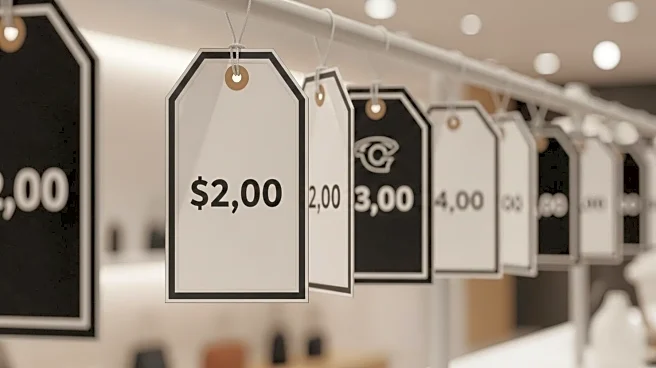What's Happening?
Ross Stores has announced plans to raise prices in response to the expiration of a trade loophole that previously allowed some retailers to avoid tariff hikes imposed by President Trump. The company, which operates over 1,800 Ross Dress for Less locations and 360 DD's Discounts stores across the United States, is adjusting its pricing strategy as tariffs on imported goods are set to increase. During an earnings call, CEO James Conroy and COO Michael Hartshorn discussed the company's efforts to mitigate tariff impacts, with Hartshorn indicating that price increases will be tested in various regions. Despite these challenges, Ross Stores reported a 2% year-over-year increase in comparable store sales for the second quarter, driven by higher customer traffic and increased basket size. However, operating income dipped by 3% due to tariff-related costs.
Why It's Important?
The decision by Ross Stores to raise prices highlights the broader impact of tariffs on the retail industry, particularly for discount chains that rely heavily on imported goods. As tariffs increase, retailers like Ross must navigate higher costs, which could lead to price hikes for consumers. This situation underscores the challenges faced by businesses in maintaining competitive pricing while absorbing additional expenses. The expiration of the tariff loophole may also affect other retailers and international shippers, potentially leading to widespread price increases across the sector. Consumers may experience higher costs for low-cost imported goods, affecting purchasing power and retail sales dynamics.
What's Next?
Ross Stores plans to continue expanding its retail presence, with 90 new locations expected to open this year. The company aims to maintain its value proposition by offering high-quality, branded merchandise at competitive prices despite tariff pressures. As the tariff situation evolves, Ross will monitor customer impacts and adjust its pricing strategy accordingly. Other retailers may also need to reassess their pricing and sourcing strategies in response to the changing tariff landscape. Stakeholders, including consumers and industry leaders, will be watching closely to see how these developments affect the retail market.












